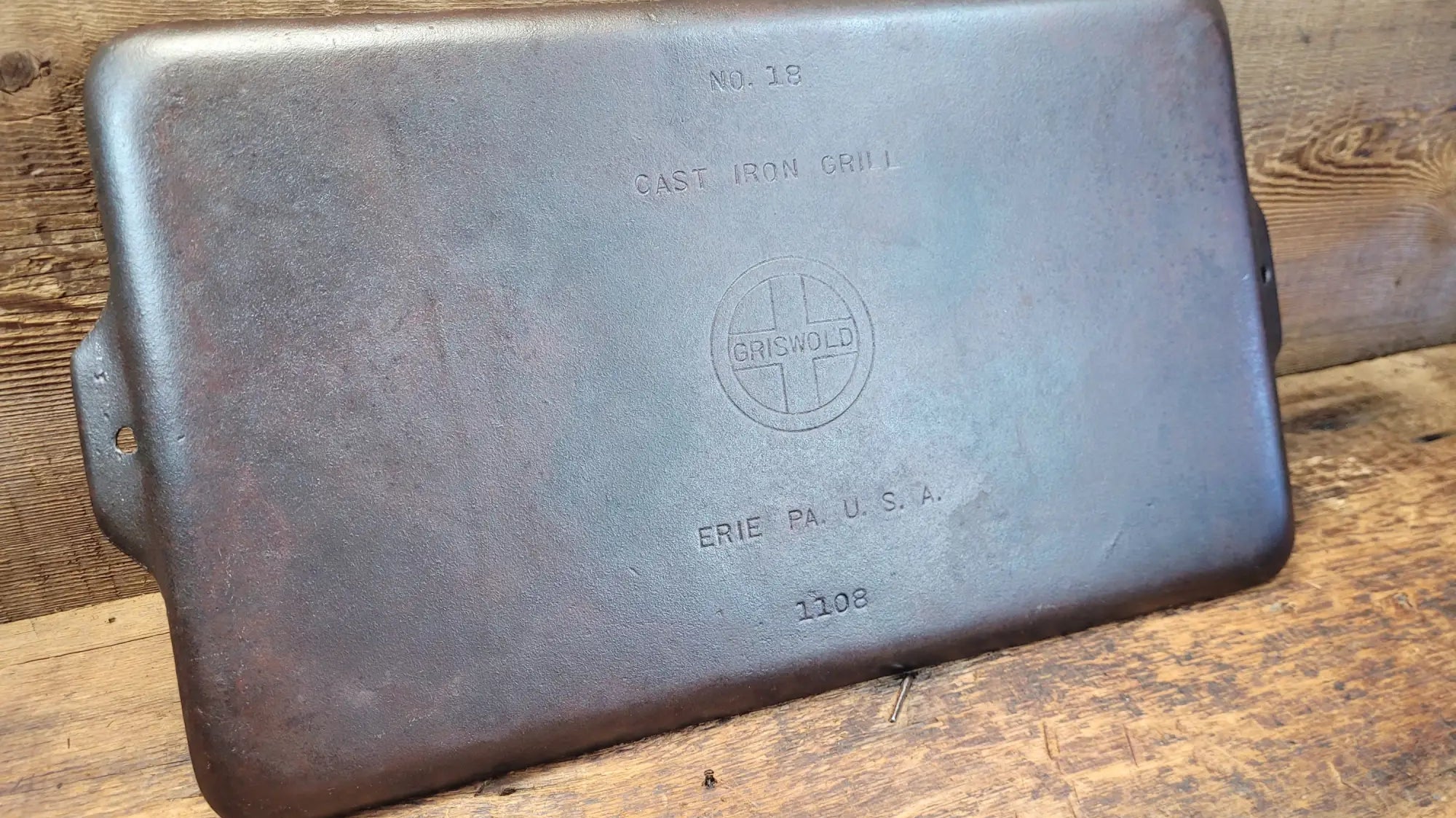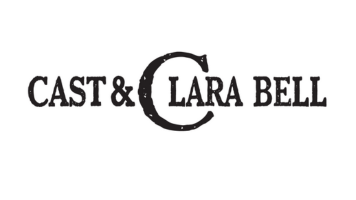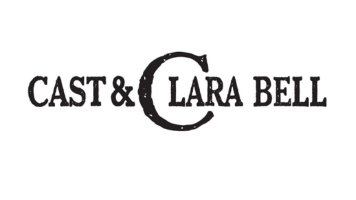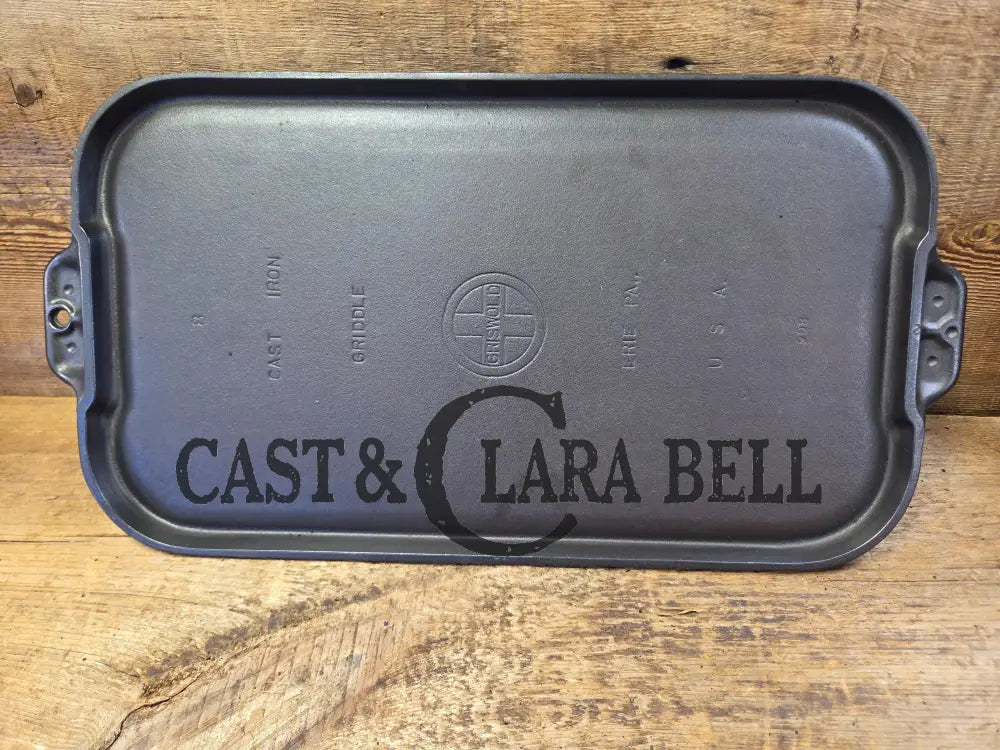Blog: Cast Iron Basics and Discussions
How we restore a 100-year-old skillet (and how you can spot quality work)
Cast & Clara Bell offers industry leading cast iron restoration using electrolysis, delivering safe, authentic, and ready-to-cook vintage cookware with zero risk and maximum value. Discover why collectors and home cooks alike choose us for expertly restored Griswold and Wagner pans, and learn how our professional service saves you days of labor, ensures safety, and guarantees lasting results.
What Are These Markings on My Cast Iron? What Do They Mean? Do They Make Mine Rare?
What do those markings on your cast iron skillet mean? Learn about maker’s marks, shift marks, and why our restored vintage cookware is worth the investment.
Where Can I Buy Griswold Cast Iron These Days??? (Spoiler: Right Here, Friends.)
You can buy Griswold cast iron just about anywhere—estate sales, eBay, even Craigslist. But if you want a fully restored, ready-to-cook heirloom skillet (and expert help choosing the right one), that’s where Cast & Clara Bell comes in.
The Restorer's Take: Wagner Cast Iron Skillets
Wagner cast iron skillets have earned their place as kitchen workhorses and collector favorites alike. Made from the 1890s through mid-century, these skillets are known for their elegant simplicity, lightweight design, and ultra-smooth interiors. Whether you prefer the classic heat ring or the later smooth bottom models, Wagner pans deliver reliable performance, easy handling, and a timeless look that fits any kitchen. With a reputation for quality that rivals Griswold—but often at a more affordable price—Wagner is the go-to choice for cooks who want vintage charm and everyday usability. Want to learn more or find the perfect Wagner skillet for your home? Reach out to us at restore@castandclarabell.com.
The Restorer's Take: Griswold Cast Iron Skillets
Discover why Griswold cast iron remains a favorite among collectors and cooks alike. From rare Erie skillets to iconic block logos, we break down appearance, design, weight, and performance in this detailed spotlight.
Don’t Panic! Why Your Cast Iron Might Look Worn, or Show Black Residue After First Use
Noticing dullness or black residue on your newly restored cast iron? Don’t worry — it's normal! Learn why early seasoning wears and how to refresh your pan in a few simple steps.
At C&CB, we season all of our cast iron pieces with 100% Organic Beef Tallow...and here's why
Does Cast Iron need to "Sit Flat"? The Real Scoop on Flatness and Vintage Cast Iron Cookware
Ever seen the words “spinner” or “moves when prompted” in a cast iron listing and wondered what they mean? In this post, we explain why flatness matters for certain stoves — and why it might even save you money depending on your setup.
Is cast iron non-stick? Why is my food sticking?
Cleaning cast iron: To Soap or Not To Soap?
Will soap ruin your cast iron skillet? Not at all. In this post, we break down common myths around cleaning cast iron with soap, explain what seasoning really is, and share how Grandma Clara Bell might actually agree with us after all.
Understanding Cast Iron Value: What Makes One Pan Pricier Than Another?
Why do some vintage cast iron skillets cost $50 and others $1,500? In this post, we explore the two biggest factors that drive cast iron prices: rarity and collectibility. Whether you're a seasoned collector or just getting started, this guide will help you better understand what you're looking at — and paying for.
Why Is My Food Sticking to Cast Iron? The Truth About Non-Stick Cooking
Tired of eggs clinging to your cast iron pan like glue? You’re not alone. In this post, we break down what “non-stick” really means with cast iron, why food might be sticking, and the one factor that matters more than seasoning: temperature control.











